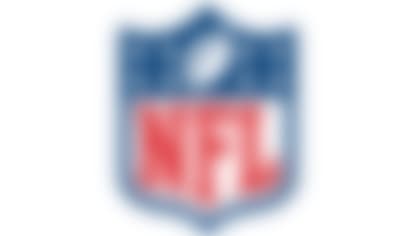One of the mechanisms teams have to protect talent is the use of a "tag." A tag is used to protect one potential unrestricted free agent from the marketplace.
There are two tags to choose from:
1. A franchise tag, which pays the chosen player the average salary of the top five players at his position. If another club wants a franchise-tagged player, that team will have to surrender two first-round picks to the home club.
2. A transition tag, which gives the chosen player the average salary of the top 10 players at a position. All the home team gets for a transition-tagged player is the right to match an offer the player can generate from another club. There is no draft compensation involved.
In a salary-capped environment, teams are permitted to use one of these tags for the whole roster. In an uncapped year -- which we can expect this year -- a club can use one of each of the tags, which in theory means that the 32 teams could capture 64 veteran players scheduled for free agency. After looking at all of the free agents preparing for the start of free agency, it appears there will be very few tagged players this year.
Here are a few reasons why teams will not be tagging many players, even though teams have no salary-cap restrictions (if we see six to seven franchise tags and less than three transition tags, it wouldn't surprise me one bit).
1. Contract planning
Teams have been preparing for the potential uncapped year for close to two years, and they have wrapped up most of the best players on rosters long before getting to this point. There may be no more than 70 unrestricted starters on the market by March 5, which is when free agency begins. When you throw out most of the older veterans on the list, as well as the marginal starters that can be replaced by younger players, there really aren't more than a dozen players even up for consideration. There is one position that is under heavy consideration: The 3-4 nose tackles.
2. Former tagged players
A few years ago, the tag system was revised to discourage teams from franchise-tagging a player multiple years in a row. When a player is tagged, that player gets the average salary of the top five players at his position, or 120 percent of what he made the year before, whichever is greater.
Julius Peppers is the classic example of players who have been tagged before. Peppers is now entering the third consecutive year that the Carolina Panthers can tag him. Even though the defensive end franchise tag is worth $12.39 million, Peppers qualifies for more than $20 million per season because of the 120 percent rule.
Other players that teams would like to tag, but are confronted by the same issue, are Cardinals LB Karlos Dansby, Chargers RB Darren Sproles and Texans CB Dunta Robinson.
3. The tag prices
Here is a list of the tag values that teams will have to think about before tagging a player. For example, it's easy for someone to say the Vikings could tag 31-year-old running back Chester Taylor, a role player who is valuable to his team, but at $8.15 million a season?
Consider how certain players really affect the tag prices and you begin to understand the pricing dilemma. There is no doubt that for the seasons in which Peppers was tagged, the franchise tag value for defensive ends was inflated. Richard Seymour stands to be a beneficiary of the Peppers situation. Since the offensive line is all grouped together and not broken up like the defensive line (which has different values for defensive ends and tackles), it makes it tough to ever tag a center or right guard when the price is affected by what left tackles -- one of the highest-paid positions in the NFL -- make.
4. Players that should be tagged
As mentioned earlier, the 3-4 nose tackles will dominate the tagging process this offseason. The recent contracts of Albert Haynesworth, Shaun Rogers and Kris Jenkins complicate matters. Still, the 49ers' Aubrayo Franklin, the Patriots' Vince Wilfork and perhaps even the Steelers' Casey Hampton could all get tagged at $7.003 million.
Darren Sharper helped deliver a championship for New Orleans, and at his age a tag of $6.455 million makes sense, but a long-term deal does not. Getting another year probably works for the Saints.
The Colts really like middle linebacker Gary Brackett, but a tag of $9.68 million for a team that has to pay Peyton Manning, Dwight Freeney, Reggie Wayne, Dallas Clark and a few other high-priced players probably can't afford another big salary.
Finally, the tags are inviting, but I don't anticipate the uncapped year being the impetus for a lot of captured players. Teams still operate with a budget and bottom line.



